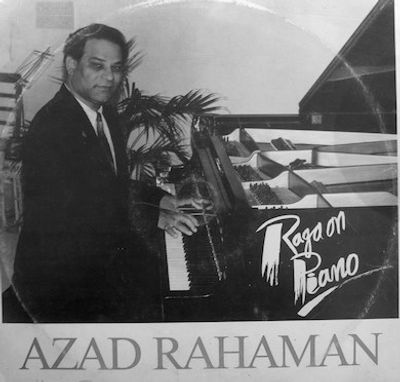Raaga on Piano
Azad Rahaman's Journey to the Western World
Azad Rahaman always had great interest in western musical instruments, specially the Piano. While studying at Rabindrabharati Unversity, he used to take Piano Lessons from a priest at a local church. Sometimes, particular life circumstance can manifest the excellence and talents of a musician and lead to new inventiveness, unique musical practices and create new audiences. Rahaman started playing raagas on the Piano with the slow alaap (overture), leading to more rapid movements and swirling expressions hitting the right notes and mood. He later published a long play record and CD with his compositions, which he named 'Raaga on Piano'. Through this creation, he wanted to reach out to the western world by introducing the innovative work of the East. Throughout the early 1990s, he travelled Europe to perform his Piano compositions on Bhim Palasri (afternoon melody), Puria (pre-evening melody), Jog (late-evening melody) using different rhythmic patters (Delayed trital, Rapid Trital, Jhaptaal). He created a new raaga 'Naba-Rang' and composed a melodic symphony. The piano he played was a blending of eastern and western musical influences. His compositions were appreciated by the music connoisseurs around the world and performed by a symphony orchestra in Germany.

Long Play Cover 'Raga on Piano'
News Report
Piano Recital at the American International School in 1993